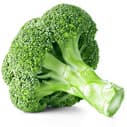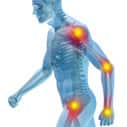
What's Hot
What's Hot
News flashes are posted here frequently to keep you up-to-date with the latest advances in health and longevity. We have an unparalleled track record of breaking stories about life extension advances.
Omega-3 fatty acids boost B vitamin brain benefit
 April 29 2015. According to the outcome of a study reported online on April 15, 2015 in the American Journal of Clinical Nutrition, it may be necessary to have a high level of omega 3 fatty acids in order to fully benefit from B vitamins' protective effect against brain atrophy.
April 29 2015. According to the outcome of a study reported online on April 15, 2015 in the American Journal of Clinical Nutrition, it may be necessary to have a high level of omega 3 fatty acids in order to fully benefit from B vitamins' protective effect against brain atrophy.
The investigation was part of the Homocysteine and B Vitamins in Cognitive Impairment (VITACOG) trial, which found a reduction in the global and gray matter brain atrophy rate in cognitively impaired older men and women treated with homocysteine-lowering vitamins. Subjects in VITACOG received a placebo or 0.8 mg folic acid, 0.5 mg vitamin B12 and 20 mg vitamin B6 daily for two years and underwent magnetic resonance imaging of the brain before and after treatment. The current retrospective study sought to determine whether plasma omega 3 fatty acid levels modified the effect of B vitamin supplementation in VITACOG participants. By analyzing blood samples collected at the study's beginning and conclusion for plasma levels of the omega 3 fatty acids EPA and DHA, the researchers uncovered a significant interaction between B vitamin supplementation and omega 3. While subjects with low omega 3 levels at the beginning of the study did not appear to benefit from B vitamins, among those whose levels were high, supplementation with B vitamins reduced the average rate of brain atrophy by 40% in comparison with the placebo. And in subjects whose omega 3 fatty acids were among the highest, B vitamins showed a significant effect only those whose homocysteine levels were 11.3 micromoles per liter or more.
Authors Fredrik Jernerén and colleagues hypothesize that "low total homocysteine concentrations, which are the consequence of B vitamin treatment, facilitate the protective effect of omega-3 fatty acids against brain atrophy."
—D Dye
Chondroitin/glucosamine reduce inflammation in overweight men and women
 April 27 2015. The results of a randomized, double-blinded, cross-over study reported on February 26, 2015 in the journal PLoS One add evidence to an anti-inflammatory effect associated with chondroitin sulfate and glucosamine hydrochloride—two supplements commonly used for the treatment of arthritis.
April 27 2015. The results of a randomized, double-blinded, cross-over study reported on February 26, 2015 in the journal PLoS One add evidence to an anti-inflammatory effect associated with chondroitin sulfate and glucosamine hydrochloride—two supplements commonly used for the treatment of arthritis.
"Glucosamine and chondroitin are popular non-vitamin dietary supplements used for osteoarthritis," write Sandi L. Navarro and colleagues at Seattle's Fred Hutchinson Cancer Research Center in the introduction to their report. "In vitro and animal studies show that glucosamine and chondroitin inhibit NF-kB, a central mediator of inflammation, but no definitive trials have been done in healthy humans."
The team enrolled nine men and nine women between the ages of 20 and 55 years with a body mass index that categorized them as overweight. Participants were assigned to receive a placebo or 1200 mg chondroitin sulfate and 1500 mg glucosamine hydrochloride daily for 28 days followed by a 28 day period in which no supplements were received. This was followed by another 28 day phase in which the initial treatments were switched. Markers of inflammation, including C-reactive protein (CRP), and oxidative stress were measured in blood and urine at the beginning of the study and on the last day of each intervention period.
Compared with concentrations measured after the placebo phase, serum CRP levels were 23% lower following 28 days of chondroitin sulfate and glucosamine hydrochloride. Plasma proteomics analysis indicated a reduction in the cytokine activity pathway following chondroitin/glucosamine supplementation.
"We found that glucosamine and chondroitin significantly reduced circulating CRP concentrations compared to placebo, and gene set enrichment analyses indicated that cytokine activity and other inflammation-related pathways were significantly decreased," Dr Navarro and associates conclude. "This study adds evidence for potential mechanisms supporting epidemiologic findings that glucosamine and chondroitin are associated with reduced risk of lung and colorectal cancer."
—D Dye
Analysis affirms vitamin E's effectiveness in NASH
 April 24 2015. The International Liver Congress™ 2015 was the site of a presentation on April 23 of the outcome of an analysis of three clinical trials which affirmed a benefit for D-alpha-tocopherol treatment of nonalcoholic steatohepatitis (NASH), a serious liver condition. NASH is characterized by inflammation of the liver due to fat accumulation, and is preceded by nonalcoholic fatty liver disease, which affects approximately a third of the U.S. population.
April 24 2015. The International Liver Congress™ 2015 was the site of a presentation on April 23 of the outcome of an analysis of three clinical trials which affirmed a benefit for D-alpha-tocopherol treatment of nonalcoholic steatohepatitis (NASH), a serious liver condition. NASH is characterized by inflammation of the liver due to fat accumulation, and is preceded by nonalcoholic fatty liver disease, which affects approximately a third of the U.S. population.
The analysis included participants in the PIVENS trial, which compared vitamin E to pioglitazone and a placebo in nondiabetic adults; TONIC, which compared vitamin E to metformin and placebo in nondiabetic children, and FLINT, which compared diabetics and nondiabetics given obeticholic acid to a placebo group, some of whom were supplementing with vitamin E. Among 155 NASH patients treated with vitamin E, histologic improvement was more than twice as likely to occur in comparison with 192 patients who did not receive the vitamin. While 20% of those who did not receive vitamin E experienced resolution of their disease, resolution occurred in 38% of vitamin-treated patients. Cardiac events and lipid changes were similar among both groups.
"Vitamin E treatment was associated with significant improvement in NASH histology and resolution of NASH in a pooled analysis of three trials of adult and pediatric NASH," conclude Kris V. Kowdley of Seattle's Swedish Medical Center and colleagues. "No increase in cardiovascular events or adverse lipid profiles was observed with vitamin E treatment. These data support the use of vitamin E as a treatment for NASH."
—D Dye
Milk thistle could help prevent and slow the growth of colorectal cancer
 April 22 2015. Research findings presented at the American Association for Cancer Research Annual Meeting 2015 indicate a role for silibinin, an active compound in milk thistle seeds, in reducing colorectal cancer stem cell growth.
April 22 2015. Research findings presented at the American Association for Cancer Research Annual Meeting 2015 indicate a role for silibinin, an active compound in milk thistle seeds, in reducing colorectal cancer stem cell growth.
Acting on the results of earlier research which found that silibinin impacted cell signaling associated with colorectal cancer stem cell formation and survival, Rajesh Agarwal, PhD, and colleagues at the University of Colorado Cancer Center tested the effect of the compound in a mouse model. The mice received colorectal cancer stem cells and diets with or without added silibinin. Tumor growth was evaluated via visual inspection, MRI and tumor metabolism assessment. Stem cells derived from these tumors were then reinjected into other mice to measure their growth pattern in the absence of silibinin.
"It's very simple: tumors from mice that were initially fed silibinin had fewer cancer stem cells, were smaller, had lower metabolisms and showed decreased growth of new blood vessels,” reported Dr Agarwal, who is a professor at the at CU’s Skaggs School of Pharmacy and Pharmaceutical Sciences. “Importantly, when these cancer stem cells from tumors in mice fed silibinin were reinjected into new mice, we found these stem cells had lost their potential to repopulate even in the absence of silibinin exposure."
Sushil Kumar, PhD, who is a postdoctoral fellow in Dr Agarwal’s lab added, "We have been deeply involved in this line of research that extends from silibinin to its chemopreventive properties in colorectal cancer, and the current study takes another important step: we see both a likely chemopreventive and a therapeutic mechanism and the result of this mechanism in animal models."
—D Dye
Broccoli sprout extract shows promise for head and neck cancer prevention
 April 20 2015. Findings from research reported at the American Association for Cancer Research Annual Meeting in Philadelphia reveal a protective effect for an extract of broccoli sprouts against oral cancer. The sprouts are high in sulforaphane, a compound that occurs in broccoli and other cruciferous vegetables whose intake has been associated with protection against environmental carcinogens and several cancers.
April 20 2015. Findings from research reported at the American Association for Cancer Research Annual Meeting in Philadelphia reveal a protective effect for an extract of broccoli sprouts against oral cancer. The sprouts are high in sulforaphane, a compound that occurs in broccoli and other cruciferous vegetables whose intake has been associated with protection against environmental carcinogens and several cancers.
Acting on positive findings in mice predisposed to the disease, Julie Bauman, MD, MPH, and her associates at the University of Pittsburgh Cancer Institute tested the effect of broccoli sprout extract in ten healthy human volunteers. The extract was well tolerated and was associated with protective changes in the lining of the subjects' mouths, indicating it was well-absorbed and directed to at-risk tissue. These preliminary studies are the basis for a clinical trial that will be conducted next year, which will involve 40 participants successfully treated for head and neck cancer who will be given broccoli seed powder capsules.
“People who are cured of head and neck cancer are still at very high risk for a second cancer in their mouth or throat, and, unfortunately, these second cancers are commonly fatal,” noted Dr Bauman, who is codirector of the University of Pittsburgh Medical Center Head and Neck Cancer Center of Excellence. “So we’re developing a safe, natural molecule found in cruciferous vegetables to protect the oral lining where these cancers form.”
“We call this ‘green chemoprevention,’ where simple seed preparations or plant extracts are used to prevent disease,” added Dr Bauman, who is also an associate professor at the University of Pittsburg School of Medicine. “Green chemoprevention requires less money and fewer resources than a traditional pharmaceutical study, and could be more easily disseminated in developing countries where head and neck cancer is a significant problem.”
—D Dye
Omega 3 essential for brain development
 April 17 2015. The April 15, 2015 issue of The Journal of Neuroscience reports the discovery of researchers at the University of California Irvine of an important role for the omega 3 fatty acid docosahexaenoic acid (DHA) in fetal brain development.
April 17 2015. The April 15, 2015 issue of The Journal of Neuroscience reports the discovery of researchers at the University of California Irvine of an important role for the omega 3 fatty acid docosahexaenoic acid (DHA) in fetal brain development.
Susan Cohen-Cory and colleagues studied DHA's effect in the African clawed frog Xenopus laevis. Because frog embryos are translucent and develop outside the mother, using these amphibians allowed the researchers to observe brain development at its different stages. Mother frogs were given diets containing adequate or deficient amounts of DHA, and their embryos were examined every ten weeks for up to sixty weeks. The mothers were then given a diet supplemented with fish oil, which is a significant source of omega 3.
After 40 weeks on a DHA-deficient diet, egg cells and tadpoles had reduced DHA levels and at 60 weeks, brain DHA was lowered by 57%. Deficient frogs were found to have poorly developed optic neurons and a reduction in synapses, which facilitate the transmission of impulses from one neuron to another. "Additionally, when we changed the diets of DHA-deficient mothers to include a proper level of this dietary fatty acid, neuronal and synaptic growth flourished and returned to normal in the following generation of tadpoles," reported Dr Cohen-Cory, who is a professor of neurobiology and behavior and UC Irvine.
Dr Cohen-Cory and her associates additionally observed a correlation between neuron changes and a decrease in brain-derived neurotrophic factor (BDNF), a protein that supports neuron survival and the growth of new neurons and synapses. "Our results indicate that DHA impacts dendrite maturation and synaptic connectivity in the developing brain, and it may be involved in neurotrophic support by BDNF," they conclude.
—D Dye
How vitamin E deficiency damages the brain
 April 15 2015. On April 8, 2015, the Journal of Lipid Research published an article which explains how a sufficient intake of vitamin E could help protect the brain from lipid peroxidation and its damaging effects.
April 15 2015. On April 8, 2015, the Journal of Lipid Research published an article which explains how a sufficient intake of vitamin E could help protect the brain from lipid peroxidation and its damaging effects.
Maret G. Traber and her associates at Oregon State University evaluated the effects of lifelong vitamin E deficiency in zebrafish. After nine months of consuming a diet with or without vitamin E, the fish's brains were examined.
The team observed a reduction of approximately one-third in the brain cell membrane component DHA-PC in fish fed the vitamin E deficient diet in comparison with those whose diets were sufficient. Deficient fish also had a level of lyso PLs--needed for getting DHA into the brain--that averaged 60% less. Hydroxy-DHA-PC 38:6 was higher in deficient fish, indicating increased peroxidation of DHA, which is an omega 3 fatty acid.
"This research showed that vitamin E is needed to prevent a dramatic loss of a critically important molecule in the brain, and helps explain why vitamin E is needed for brain health," Dr Traber stated. "Human brains are very enriched in DHA but they can't make it, they get it from the liver. The particular molecules that help carry it there are these lyso PLs, and the amount of those compounds is being greatly reduced when vitamin E intake is insufficient. This sets the stage for cellular membrane damage and neuronal death."
"You can't build a house without the necessary materials," she observed. "In a sense, if vitamin E is inadequate, we're cutting by more than half the amount of materials with which we can build and maintain the brain."
"There's increasingly clear evidence that vitamin E is associated with brain protection, and now we're starting to better understand some of the underlying mechanisms," she concluded.
—D Dye
Selenium reduces heart damage following cardiac arrest
 April 13 2015. An article scheduled for publication in Critical Care Medicine describes the finding of a team at Fred Hutchinson Cancer Research Center of a protective effect for selenide, a form of the mineral selenium, against reperfusion injury that occurs when blood flow is restored to the heart following cardiac arrest.
April 13 2015. An article scheduled for publication in Critical Care Medicine describes the finding of a team at Fred Hutchinson Cancer Research Center of a protective effect for selenide, a form of the mineral selenium, against reperfusion injury that occurs when blood flow is restored to the heart following cardiac arrest.
Mark Roth, PhD, and colleagues examined the effects of selenium in two mouse models of ischemia reperfusion injury. In one experiment, the animals' left anterior descending coronary artery was blocked for one hour and blood flow was subsequently restored. Two hours later, Dr Roth and his associates measured selenium levels in the heart and blood. "We observed that the greater the injury, the greater the loss of selenium in the blood and the greater amount of selenium was found in the heart," Dr Roth reported.
The team then restricted blood flow to one of the animals' hind limbs and observed a significant increase in selenide in the injured limb after blood flow was restored in comparison with the untreated hind limb. "These results, along with prior understanding of selenium biology, show that endogenous, or naturally occurring, selenium is rapidly mobilized from the blood to help protect injured tissue after blood flow is restored," Dr Roth stated. "This led us to wonder whether supplementing the body's naturally occurring selenide with an infusion of selenide might further protect tissues after a heart attack once blood flow is restored."
"We found that administration of selenide after the heart has been deprived of blood flow and before blood flow is restored significantly protects the heart tissue in a mouse model of acute myocardial infarction and reperfusion injury," Dr Roth revealed. "These results suggest there is a natural mechanism that targets selenide to recently reperfused tissue and protects it from injury."
—D Dye
Oxidative stress impairs immune response
 April 10 2015. The April 6, 2015 issue of the Journal of Experimental Medicine published an article by Swiss and German researchers whose investigation affirmed the importance of protection against oxidative stress in the maintenance of healthy immune function.
April 10 2015. The April 6, 2015 issue of the Journal of Experimental Medicine published an article by Swiss and German researchers whose investigation affirmed the importance of protection against oxidative stress in the maintenance of healthy immune function.
For their study, Manfred Kopf of ETH Zurich and his associates utilized mice with a T-cell specific deficiency of the antioxidant enzyme glutathione peroxidase 4, which scavenges phospholipid hydroperoxides. In these animals, antigen-specific CD8+ and CD4+ T cells failed to expand and protect against acute lymphocytic choriomeningitis virus and Leishmania major parasite infections.
By supplementing the animals' diet with a dose of the antioxidant vitamin E in amount that was ten times greater than that provided by a standard diet, the effect of glutathione peroxidase 4 deficiency was reversed. This allowed the T cells to expand rather than dying off as they divided in an iron-dependent form of cell death known as ferroptosis. "We are the first to demonstrate that oxidative stress causes immune cells to suffer the same type of death as cancer cells," Dr Kopf announced.
"Our work shows that even a genetic defect in a major part of a cell's antioxidative machinery can be compensated for by delivering a high dose of vitamin E," Dr Kopf concluded. "That is new and surprising."
—D Dye
Studies reveal gut pathways for glucose reduction by metformin and resveratrol
 April 8 2015. Letters published on April 6, 2015 in Nature Medicine report that glucose-lowering signaling pathways in the duodenum (part of the small intestine) are activated by resveratrol and the antidiabetic drug metformin.
April 8 2015. Letters published on April 6, 2015 in Nature Medicine report that glucose-lowering signaling pathways in the duodenum (part of the small intestine) are activated by resveratrol and the antidiabetic drug metformin.
In the first communication, titled "Resveratrol activates duodenal Sirt1 to reverse insulin resistance in rats through a neuronal network," Tony K. T. Lam and colleagues at the University of Toronto described research conducted in rats that received a three-day high fat diet along with intraduodenal infusions of resveratrol. They found a reversal of the diet-induced reduction in duodenal mucosal levels of the longevity-associated protein Sirt1, in addition to improvement in insulin sensitivity and a lower hepatic glucose production in treated animals.
In the next letter, "Metformin activates a duodenal AMPK-dependent pathway to lower hepatic glucose production in rats," Dr Lam and his associates report that intraduodenal infusion of metformin for 50 minutes activated duodenal mucosal AMPK and lowered hepatic glucose production in animals that received the three-day high fat, insulin-resistance-inducing diet. "Our work shows that these two antidiabetic agents target the intestine directly, a previously underappreciated organ in diabetes therapy, to lower blood glucose levels, even in obese rats or those with diabetes," stated coauthor Frank A. Duca, PhD.
"We already knew that the brain and liver regulate blood glucose levels, but the question has been, how do you therapeutically target either of these two organs without incurring side effects?" asked Dr Lam. "We may have found a way around this problem by suggesting that molecules in the small intestine can be the initial targets instead. If new medicines can be developed that stimulate these sensing molecules in the gut, we may have effective ways of slowing down the body's production of sugar, thereby lowering blood sugar levels in diabetes."
—D Dye
Zinc deficiency linked to chronic inflammation
 April 6 2015. A report published in the May 2015 issue of Molecular Nutrition and Food Research reveals how being deficient in the mineral zinc results in immune dysfunction and chronic inflammation, which is involved in cardiovascular disease and other conditions.
April 6 2015. A report published in the May 2015 issue of Molecular Nutrition and Food Research reveals how being deficient in the mineral zinc results in immune dysfunction and chronic inflammation, which is involved in cardiovascular disease and other conditions.
Emily Ho of Oregon State University (OSU) and her colleagues examined the effects of zinc deficiency in cell cultures and aged mice. The team observed an increase in the responses of the cytokines interleukin 1beta and interleukin 6 following the administration of an inflammation-provoking substance to human white blood cells known as monocytes. In aged mice, zinc deficiency was also associated with an increase in interleukin 6 gene expression.
"Zinc deficiency induced inflammatory response in part by eliciting aberrant immune cell activation and altered promoter methylation," the authors concluded. "Our results suggested potential interactions between zinc status, epigenetics, and immune function, and how their dysregulation could contribute to chronic inflammation."
"When you take away zinc, the cells that control inflammation appear to activate and respond differently; this causes the cells to promote more inflammation," explained Dr Ho, who is a professor and director of the Moore Family Center for Whole Grain Foods, Nutrition and Preventive Health in the OSU College of Public Health and Human Sciences.
Dr Ho noted that 12% of U.S. residents and nearly 40% of those 65 and older fail to obtain adequate zinc. In addition to consuming less of it, older men and women are less efficient at absorbing the mineral. "It's a double-whammy for older individuals," she observed.
"We think zinc deficiency is probably a bigger problem than most people realize," Dr Ho noted. "Preventing that deficiency is important."
—D Dye
Better DNA repair could extend life span
 April 3 2015. The April 1, 2015 issue of the journal Genes & Development published the discovery of researchers at the Spanish National Cancer Research Centre in Madrid of an extension of life span in mice bred to have multiple copies of a gene necessary for the synthesis of nucleotides, which are the building blocks of DNA. Cumulative damage to the cells' DNA is a major contributor to aging.
April 3 2015. The April 1, 2015 issue of the journal Genes & Development published the discovery of researchers at the Spanish National Cancer Research Centre in Madrid of an extension of life span in mice bred to have multiple copies of a gene necessary for the synthesis of nucleotides, which are the building blocks of DNA. Cumulative damage to the cells' DNA is a major contributor to aging.
The study builds on the finding of earlier research which determined that increasing the level of nucleotides improved survival in yeast in which ATR, a gene needed for DNA repair, was mutated. The current study utilized mice that had the same ATR mutation, which induces premature aging and is modeled on the human disease Seckel syndrome, however, the animals also had multiple copies of Rrm2, which is needed for nucleotide synthesis. "Although yeast does not age as such, the mutation of ATR in mice was also pathological, which led us to explore whether an increase in the nucleotides could also alleviate the premature aging seen in those animals," stated researchers Óscar Fernández-Capetillo and colleagues.
Dr Fernández-Capetillo's team discovered that increasing the synthesis of nucleotides via the Rrm2 mutation increased the survival of the ATR-mutant mice for 24 to 50 weeks, as well as improving other symptoms associated with premature aging.
Fragile areas of the genome that are more susceptible to breakage may be protected by the vitamins folic acid and vitamin B12. Because folic acid is a precursor molecule in nucleotide synthesis, increased intake of the vitamin could help protect against aging-related symptoms.
"The question we are asking ourselves now is whether an increase in the capacity to produce nucleotides could also lengthen life expectancy in normal animals without premature ageing," Dr Fernández-Capetillo remarked.
—D Dye
Vitamin D supplementation slows progression of low-grade prostate cancer
 April 1 2015. A presentation at the 249th National Meeting & Exposition of the American Chemical Society revealed the outcome of a randomized trial which found a benefit for vitamin D supplementation among men with low-grade prostate cancer.
April 1 2015. A presentation at the 249th National Meeting & Exposition of the American Chemical Society revealed the outcome of a randomized trial which found a benefit for vitamin D supplementation among men with low-grade prostate cancer.
Acting on the results of a previous study published in the Journal of Clinical Endocrinology and Metabolism, which found a reduction in Gleason scores (which are used to grade tumor aggressiveness) in prostate cancer patients supplemented with vitamin D over one year, Bruce Hollis, PhD, and colleagues set out to determine whether the vitamin could decrease tumor aggressiveness during the 60-day required waiting period between prostate biopsy and surgery to remove the gland. The trial randomized 37 men scheduled for elective prostatectomy to receive 4,000 international units (IU) vitamin D or a placebo for 60 days. Examination of the excised glands revealed improvement among a number of men in the vitamin D-supplemented group, in contrast with no improvement or worsening of disease in those who received a placebo. The vitamin D group also exhibited changes in cell lipids and proteins, including those involved in inflammation. "Cancer is associated with inflammation, especially in the prostate gland," stated Dr Hollis, of the Medical University of South Carolina. "Vitamin D is really fighting this inflammation within the gland."
Dr Hollis observed that the vitamin D dose used in the trial is significantly lower than the amount made in the body from daily sun exposure. "We're treating these guys with normal body levels of vitamin D," he noted. "We haven't even moved into the pharmacological levels yet."
"We don't know yet whether vitamin D treats or prevents prostate cancer," he commented. "At the minimum, what it may do is keep lower-grade prostate cancers from going ballistic."
—D Dye

